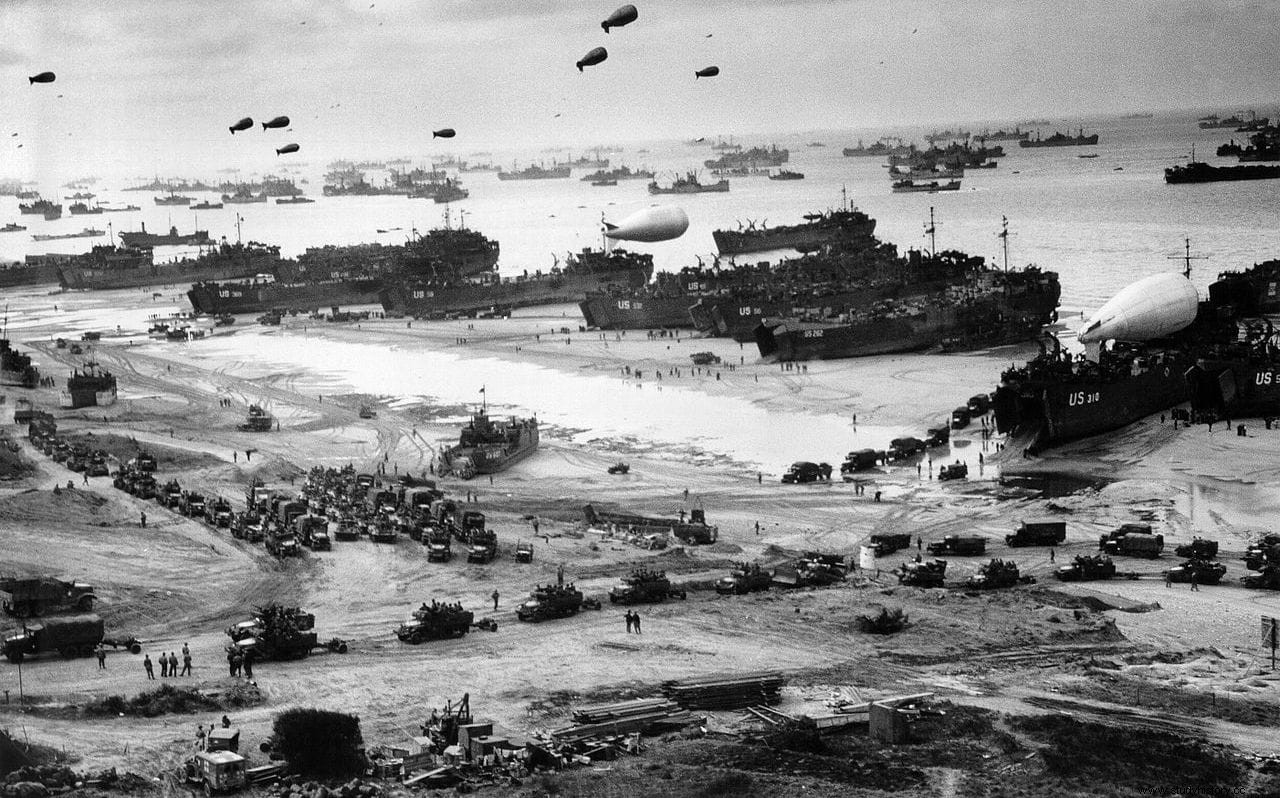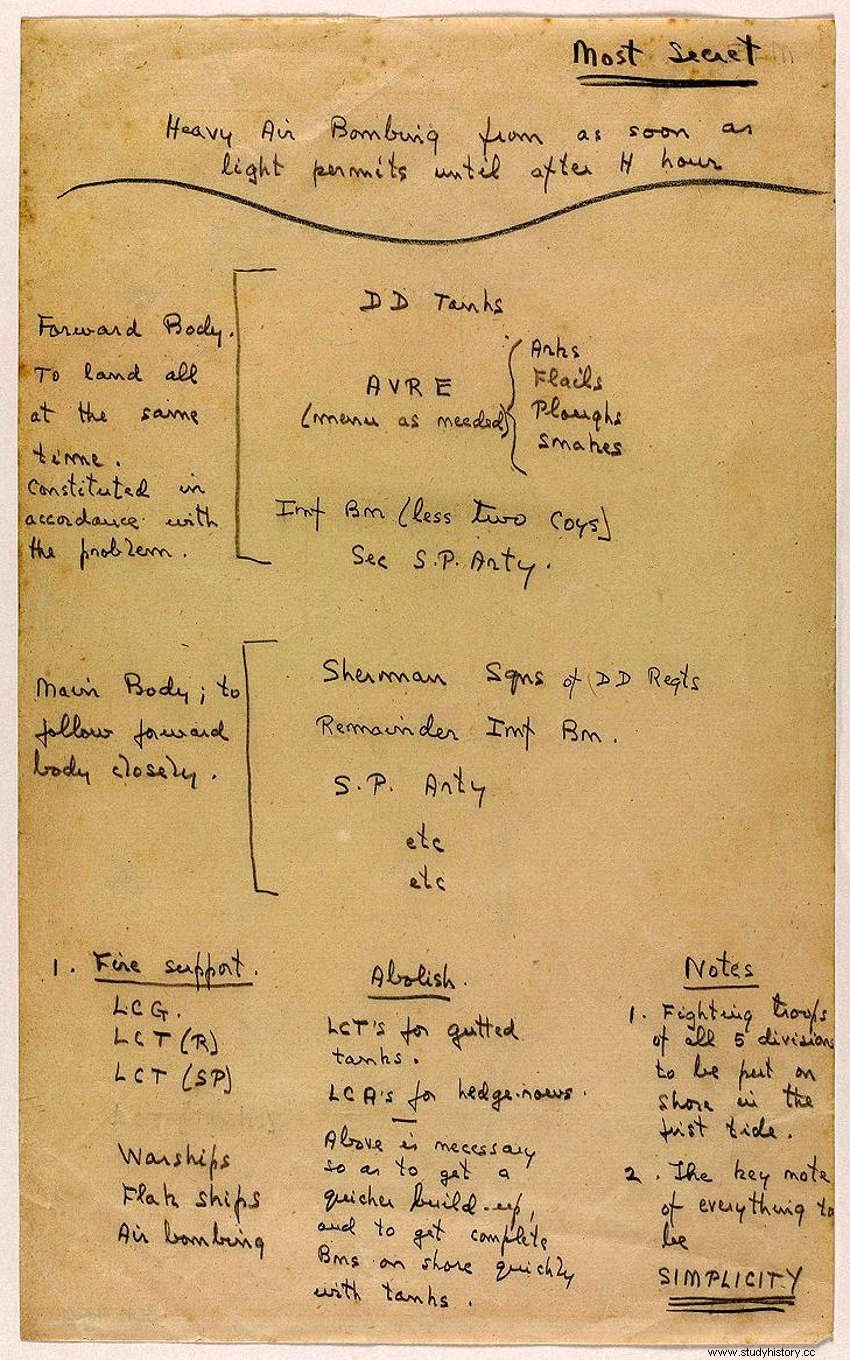One hundred and sixty thousand soldiers who later increased to three million, five thousand ships, one thousand two hundred planes... The numbers of Operation Overlord and its complementary Operation Neptune , names of what is more popularly known as D-Day , the famous landing in Normandy, are overwhelming and make it difficult to imagine the complex logistical work involved in that decisive battle of the Second World War. However, all this could be synthetically outlined in a simple sheet of paper by hand , the work of General Montgomery.
Let's remember the facts. The possibility of an invasion on the mainland on the part of the Allies it was decided in 1943, at the Trident Conference (Washington D.C), although for the moment only the proposal was accepted without further specifying that it would take place through the English Channel. in that sense, Calais had all the numbers for being the closest point to the British coast, but precisely for that reason it was a place better defended by the Germans, apart from the fact that its natural conditions were difficult. That is why the focus was on the Norman coast .
A plan for the spring of the following year began to be studied, with the American general Dwight D. Eisenhower and the British Bernard Law Montgomery (later promoted to marshal) to the front. The first draft proposed a landing of three divisions and the launch of another three airborne with the capture of the port of Cherbourg as the objective.

The thing was delayed at the same time that the number of forces involved was progressively expanded until adding thirty-nine divisions to disembark at twenty-five points, apart from the paratroopers launched behind enemy lines, which were to take Caen and other towns.
Thousands of reconnaissance flights and the contribution of photos and postcards by citizen collaboration, as well as the information provided by the French Resistance, helped to know the terrain perfectly. And so, while the huge material necessary and both training drills and diversionary maneuvers were carried out, the Germans understood that an invasion was being prepared and reinforced their defenses in the places they considered most likely for an amphibious landing, since Rommel's plan was to stop the enemy operation on the beaches themselves , although other generals considered it impossible and recommended holding inside so their tanks could get to where they were needed in less time.

As is known, D-Day was June 6, 1944 , although Operation Overlord could not be completed until August 30. By then the allies had already placed two million men in France and they were ready to advance to contact the forces that were already doing so from the south of the country, with whom they met on September 12 to head towards Germany.
The fact is that that action brought together such an amount of human and material resources that, as we said at the beginning, it would seem impossible to coordinate them effectively. And here we return to the matter of the sheet of paper that outlined the plan.

The Imperial War Museum published in the last commemoration of the 72nd anniversary of the landing in Normandy (June 6, 2016) and for the first time several Monty documents. For example, a handwritten sketch of the harassment to the troops that they were going to participate in that day, which was read by the officers of each unit and ends with the phrase «Good luck to each one of you and good hunting on the European continent» .
But probably the most curious is that sketch, also by hand, of the relationship of forces that he believed necessary, separated into sections and listing the number of special armor that would require the first movements on Gallic soil.
It is done in pen under the heading Most secret (The most secret), which is followed by the description:“Heavy air bombing as soon as light permits until after H hours” (Heavy aerial bombardment as soon as light permits until after H hour); «Forward body to land all at the same time constituted in accordance with the problem» (The vanguard corps must disembark at the same time, decided according to the problem); and “Main body to follow forward body closely” (The main body will follow the vanguard closely.) Then there are instructions specifics on the use of tanks and taking advantage of the first tide to send the first five divisions.
But the best thing is the note at the end that synthesizes the spirit of the document by underlining it:«The key note of everything to be SIMPLICITY; that is, "The key to everything is simplicity."
